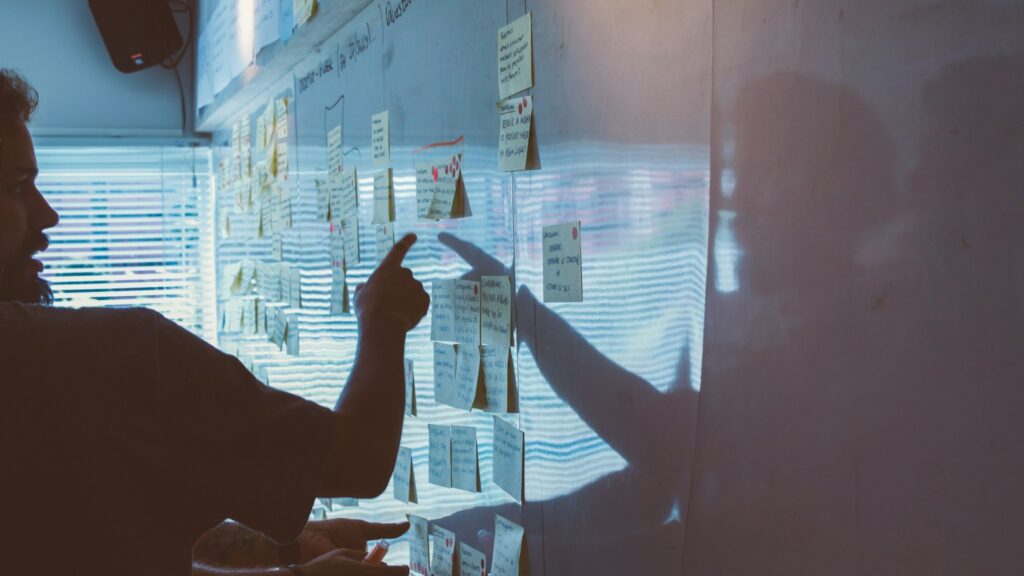Leadership development is often seen as the responsibility of HR or L&D but the reality is more complex. Leaders don’t operate in a vacuum. Their day-to-day environment shapes their growth. Culture, expectations, workloads, team dynamics and organisational support all matter.
It’s time to treat leadership development as a shared responsibility so everyone can play their part. Whether development takes the form of a coaching programme, traditional training or AI-enhanced tools, the impact will only be as strong as the collective support behind it.
Here, we outline four key players that can turn leadership potential into capability (and how).
Player 1: Senior leaders
Senior leaders often appear at the start of a development programme. They might approve budgets, sign off on final programmes or make a guest appearance at a kick-off event. But this limited involvement is a missed opportunity to maximise the impact of their organisation’s leadership development efforts.
Strategic integrators
Senior leaders are uniquely positioned to ensure development aligns with strategy, culture, values, target operating model, and future capability needs. Too often these things are disconnected from leadership development efforts.
Senior leaders should play a critical role in bringing strategic intent to life. They should translate abstract goals into clear direction, articulating how value will be created and identifying what kind of leadership is needed to achieve this. When this happens development efforts can be intentionally shaped to build the leadership capability required for future success.
Contrastingly, when leaders, HR and L&D are left to second guess the strategy and its implications, alignment becomes hit-and-miss.
Shapers of the system
Capability isn’t just about knowing it’s about whether people can apply what they’ve learned. And that depends on the system leaders work in. You can’t effectively develop leaders in a system that undermines leadership.
Research shows job manageability is five times more predictive of leadership effectiveness than skills alone. If an organisation has conflicting priorities, too many objectives or cumbersome processes, then even the most capable leader will struggle. Senior leaders have to ask themselves:
- Are the organisation’s expectations of managers and leaders clear?
- Are workloads manageable enough to allow space for development?
- Do our systems and processes support the leadership behaviours we want to see?
- And what’s my role as a senior leader in clearing any blockers?
Line managers and role models
As line managers themselves, senior leaders have a critical role to play in development. We know setting clear and specific personal learning goals boosts motivation. Senior leaders can support this by ensuring their people set relevant and stretching goals as part of personal development plans.
They can also support learning transfer with regular check-ins about how the development is going. In these meetings, senior leaders should acknowledge progress and provide feedback and support in applying new behaviours and disciplines.
When senior leaders visibly invest in their own development, sharing their own development goals and learning edges, it also sends an important signal about the value of learning across the organisation.
Player 2: Leaders themselves
Leadership development should never feel like something done to people. Yet, too often, leaders are treated as passive recipients. When development reflects the real challenges leaders face in their day-to-day context, they’re far more likely to engage and grow.
Leaders can be involved as co-creators by:
- Contributing to early design through focus groups or interviews.
- Setting and sharing personal development goals with managers and team.
- Helping choose relevant providers, coaches or learning formats.
- Giving real-time feedback during delivery to ensure relevance.
Co-creation isn’t just about shaping formal programmes, it is also about leaders taking ongoing responsibility for developing their own leadership practice. This might involve simple reflective questions like: ‘where am I stretching myself as a leader?’. Development lives in these everyday moments of reflection, experimentation and adjustment.
Player 3: Teams matter too
Leadership is lived out in relationships. Including an element of team voice to shape leadership development can add real value, but is often overlooked. This might be as simple as:
- Encouraging leaders to ask their teams ‘what do you need from me?’ and using this to shape your development offering.
- Holding focus groups or research interviews to gather team member input.
- Drawing on employee engagement survey data to highlight development priorities.
- Incorporating more formal 360-degree feedback where appropriate.
Critical to all of this is psychological safety. Without it, honest two-way feedback is unlikely to happen. As such, leadership development should include helpful direction on trust building, so that teams feel safe to share what they need and where they feel their leaders can improve.
Player 4: HR & L&D
HR and L&D are central to leadership development, but they shouldn’t be the only owners. Instead they are brilliantly placed to facilitate, align and enable in a whole host of ways. These include:
Strategic partnerships with senior leaders
These partnerships with senior leaders can help align development efforts with organisational strategy and priorities. They’re also useful for reflecting back on how structures, workloads, and processes may help or hinder leadership growth
Partnering with line managers
Building these relationships helps HR and L&D to embed development and support line managers to support their people. Let them know when their people are taking part in development, give them a heads up on the content being covered and what they might see when their leaders come back into the workplace. Even better, provide tools – like short explainer videos – to prompt supportive conversations to aid learning transfer.
Matching the development offer to your people
Avoid a sheep dip approach. Get creative and consider varied formats like facilitated quarterly leadership forums, peer coaching or modular learning rather than long programmes
When HR and L&D shift from programme delivery to organisational partnership, development becomes more than content, it becomes culture.
Capability grows in context
Leadership development works best when it’s a shared responsibility. HR, L&D, senior leaders, individual managers and their teams all have a critical role to play.
When all these players come together, alignment between strategy, support, and structures becomes possible – and meaningful results can follow.





